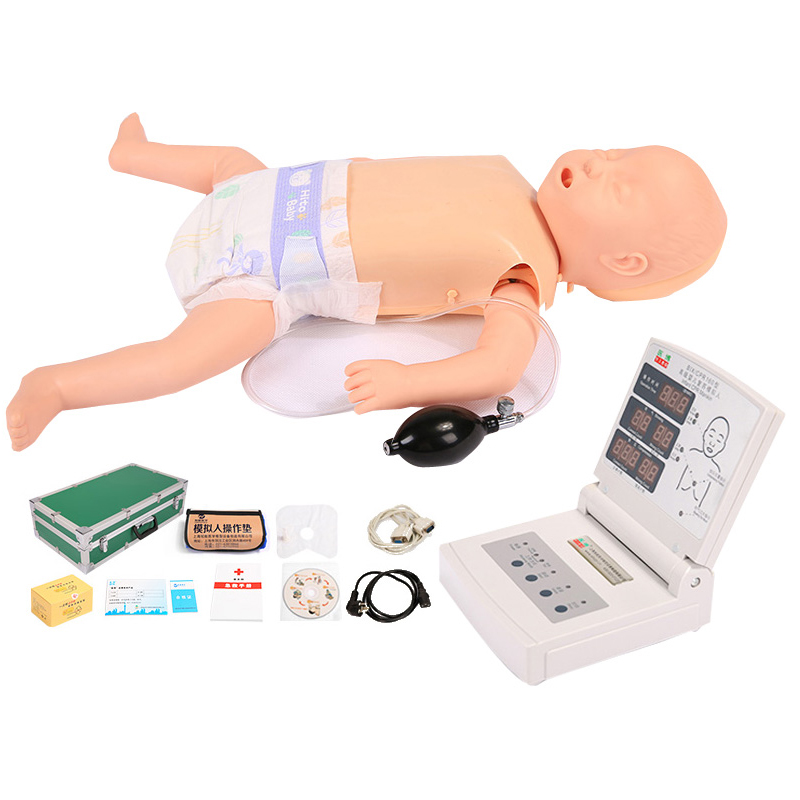

Article tag: Neonatal comprehensive first aid training MODEL| CPR MODEL|
The primary function of the neonatal Integrated First Aid training model is designed to simulate real neonatal first aid scenarios so that medical professionals and students can practice and learn without actual risk. These models help users improve first aid skills and efficiency by simulating human ph...
The primary function of the neonatal Integrated First Aid training model is designed to simulate real neonatal first aid scenarios so that medical professionals and students can practice and learn without actual risk. These models help users improve first aid skills and efficiency by simulating human physiological responses and providing real-time feedback. The following are the main functions of the neonatal comprehensive first aid training model:

Cardiopulmonary resuscitation simulation: The primary function of the neonatal comprehensive first aid training model is to simulate the process of neonatal cardiopulmonary resuscitation. This includes simulating emergency situations such as cardiac arrest and respiratory arrest, allowing users to practice first aid measures such as chest compressions and artificial respiration. By simulating different conditions and first aid responses, the model can help users get familiar with and master the operation process and skills of neonatal cardiopulmonary resuscitation.
Airway opening and airway management: Airway management of newborns is an important part of the first aid process. Models are often equipped with simulated airway structures that allow users to practice how to properly open the airway, such as chin lift or jaw lift. In addition, some advanced models have the ability to simulate airway obstruction, allowing users to learn how to remove the obstruction and maintain an open airway.
Real-time feedback systems: Many integrated neonatal first aid training models are equipped with real-time feedback systems that monitor the user's actions and provide immediate feedback. For example, the model can detect whether the depth, frequency and position of chest compressions are correct, and whether the tidal volume of artificial respiration is appropriate, and give feedback through sound, light or display. This kind of real-time feedback can help users find and correct wrong operations in time, and improve the first aid effect.
Simulation of vital signs: Some advanced neonatal comprehensive first aid training models can also simulate various vital signs of newborns, such as heart rate, breathing rate, blood pressure, etc. These simulated vital signs can be adjusted according to the needs of the user to simulate different conditions and first aid scenarios. By observing and manipulating these simulated vital signs, users can gain a deeper understanding of the complexities and challenges of neonatal emergency care.
Scenario simulation and role playing: In addition to the above functions, some neonatal comprehensive first aid training models also support scenario simulation and role playing functions. By simulating real first aid scenarios and role assignment, users can perform team collaboration and role playing exercises in the simulated environment to improve team collaboration and emergency response ability.
To sum up, the neonatal integrated first aid training model has a variety of functions designed to help users improve neonatal first aid skills and efficiency. By simulating real-world scenarios, providing real-time feedback and supporting role playing, these models provide a safe and effective learning environment for healthcare professionals and students.